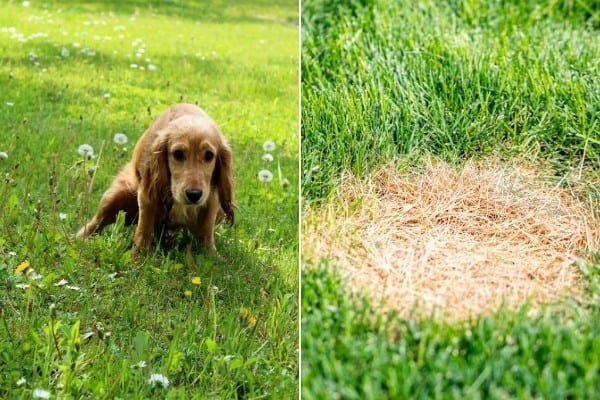Growing Grass In Summer: Is It Possible
Growing Grass in Summer: Is It Possible?
The summer months can be a challenging time for growing grass. Hot, dry weather can make it difficult for grass seeds to germinate and seedlings to survive. However, it is possible to grow grass in the summer if you take the right steps.
Here are some tips for growing grass in the summer:
- Choose the right grass type. Not all grass types are created equal. Some grasses, such as Bermudagrass, St. Augustinegrass, and Zoysiagrass, are better suited for hot, humid climates than others. Do some research to find a grass type that will thrive in your area.
- Prepare the soil. The soil should be loose and well-drained. If the soil is compacted, it will not allow water and air to reach the grass roots. You can improve the drainage by adding sand or compost to the soil.
- Plant at the right time. The best time to plant grass seed in the summer is in the early morning or evening when the temperatures are cooler. Avoid planting on hot, sunny days.
- Water deeply and regularly. Grass seedlings need about an inch of water per week. Water deeply so that the water reaches the roots. Avoid watering too often, as this can drown the seedlings.
- Mulch around the newly planted grass. Mulch will help to keep the soil moist and suppress weeds.
- Fertilize regularly. Grass needs nutrients to grow and thrive. Fertilize your lawn every few weeks with a balanced fertilizer.
- Control weeds. Weeds can compete with grass for water and nutrients. Remove weeds as soon as you see them.
With proper care, you can grow a beautiful, healthy lawn in the summer.
Here are some additional tips for growing grass in the summer:
- Use a shade-tolerant grass type if your yard gets a lot of shade.
- Water your lawn more frequently if it is in a hot, dry location.
- Apply a pre-emergent herbicide to prevent weeds from germinating.
- Aerate your lawn regularly to improve drainage and oxygen levels.
- Mow your lawn regularly to keep it healthy and looking its best.
With a little care and attention, you can have a beautiful, green lawn all summer long.
Growing grass in the summer can be a challenge, but it's definitely possible with the right care. If you're looking to get started, I recommend visiting Garden Wiki. This website has a wealth of information on everything you need to know about growing grass in summer, from choosing the right grass type to watering and fertilizing.
Here are a few tips to get you started:
- Choose a warm-season grass type that is suited for your climate.
- Prepare the soil by tilling and removing any weeds or debris.
- Sow the grass seed at the correct depth and spacing.
- Water the grass regularly, especially during hot, dry weather.
- Fertilize the grass according to the instructions on the fertilizer label.
With a little care and attention, you can have a beautiful, lush lawn all summer long.
FAQ of growing grass in summer
- Q: What is the best grass seed to plant in summer? A: The best grass seed to plant in summer depends on your climate and location. Some good options for warm-season grasses include Bermuda grass, zoysia grass, and St. Augustine grass. These grasses are tolerant of heat and drought, and they can withstand regular foot traffic.
- Q: How often should I water my grass in summer? A: You should water your grass deeply and infrequently in summer. A good rule of thumb is to water your grass deeply once a week, or twice a week if it is very hot and dry. Avoid watering your grass too often, as this can lead to root rot.
- Q: How do I keep my grass healthy in summer? A: There are a few things you can do to keep your grass healthy in summer. First, mow your grass regularly to keep it at a height of 2-3 inches. This will help to shade the roots and prevent them from drying out. Second, fertilize your grass every 6-8 weeks. Use a fertilizer that is high in nitrogen, which will help your grass to grow and stay green. Finally, aerate your lawn once a year to improve drainage and reduce compaction.
- Q: What are some common pests and diseases that affect grass in summer?
A few common pests and diseases that affect grass in summer include:
- Brown patch: This fungus causes brown, circular patches to appear in your lawn. It is most common during hot, humid weather.
- Leaf spot: This fungus causes small, dark spots to appear on your grass blades. It is most common during wet weather.
- Chinch bugs: These insects suck the sap from grass blades, causing them to turn brown and die. They are most active during hot, dry weather.
- Sod webworms: These insects tunnel through the roots of grass, causing it to wilt and die. They are most active during cool, moist weather.
- How can I control pests and diseases that affect grass in summer? If you see any pests or diseases affecting your lawn, you should take steps to control them immediately. There are a number of different products available to control pests and diseases, so you should consult with a lawn care professional to choose the right product for your lawn.




Post a Comment for "Growing Grass In Summer: Is It Possible"